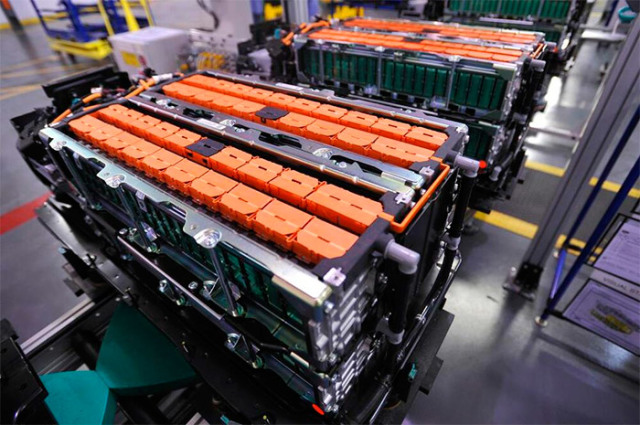The development of its own production of lithium-ion batteries is one of the key tasks on the technological agenda of Russia. Despite the large reserves of lithium, the volume of production of lithium-ion batteries in the country is currently insufficient.
The issue of creating batteries with high energy density for use in electric vehicles is particularly acute. Representatives of both industry and science contribute to solving the problem. In a new study, scientists from Skoltech, together with colleagues from France, China and other countries, for the first time were able to determine the role of cobalt and nickel in the electrochemical properties of cathode materials needed for the production of batteries. The work was published in the journal Nature Materials.
In modern lithium-ion batteries, layered oxides of lithium, nickel, manganese and cobalt are used as the material of one of the electrodes. Nickel, manganese and cobalt belong to the same class — 3 d-transition metals, so their electronic structure and chemical properties are similar to each other. Since they are absolutely uniformly mixed in the crystal structure of layered oxides, it is very difficult to separate their contribution to the electrochemical properties of the cathode material.
To solve the problem of separating the role of nickel and cobalt, scientists obtained two model compounds — lithium-nickel-manganese oxide and lithium-cobalt-manganese oxide — and then conducted a comprehensive study of their structure, composition and electrochemical properties. Using combined studies of these systems by various spectroscopic and electrochemical methods, as well as high-resolution transmission electron microscopy, the researchers presented the results of their comparison in several parameters: the local atomic structure of materials, its evolution during the operation of an electrochemical cell and the relationship of the observed phenomena with the occurrence of mechanical stresses, the kinetics (de)of lithium intercalation, the kinetics of redox processes and so on.
"We conducted a study on the unique equipment of the Center for Collective Use "High-resolution Visualization" at Skoltech. With its help, we studied the atomic structure of materials for lithium-ion batteries. Our task was to obtain data on the evolution of the local crystal structure of materials during electrochemical cycling. Sample preparation, working directly with the equipment and interpreting the results require a lot of accuracy and precision," said Anatoly Morozov, co—author of the work, junior researcher at the Skoltech Center for Energy Technologies.
"During the discussion of the results with our colleagues from the College de France, we analyzed the data not only transmission electron microscopy, but also radiography, spectroscopy and electrochemical measurements. We presented the results in the form of a comparative table, from which we can conclude about the advantages and disadvantages of cobalt and nickel-based materials. These data will be used for directional design of the composition of cathode materials to create lithium-ion batteries with high energy density required for the production of electric vehicles," explained co—author Artem Abakumov, professor and director of the Center for Energy Technologies of Skoltech.
The research was carried out within the framework of the project "Creation of promising electrochemical energy storage systems using directional design of the local structure and microstructure of electrode materials", supported by a grant from the Russian Science Foundation until 2026. Under the guidance of Professor Artem Abakumov, scientists are developing the scientific basis for the design of high-capacity electrode materials and solid electrolytes to create the next generation of secondary electrochemical current sources with high energy density.
The results of the project will contribute to the implementation of the Concept for the Development of Production and Use of Electric Motor Transport in the Russian Federation. According to the concept adopted for the period up to 2030, a production base for the production of its own electric vehicles will be developed on the territory of Russia.

